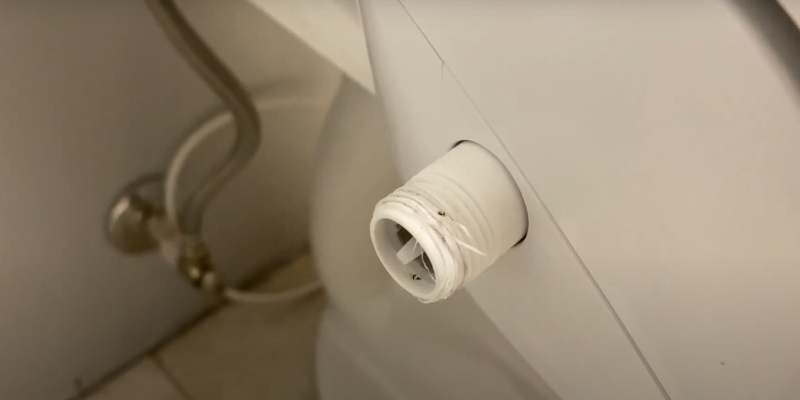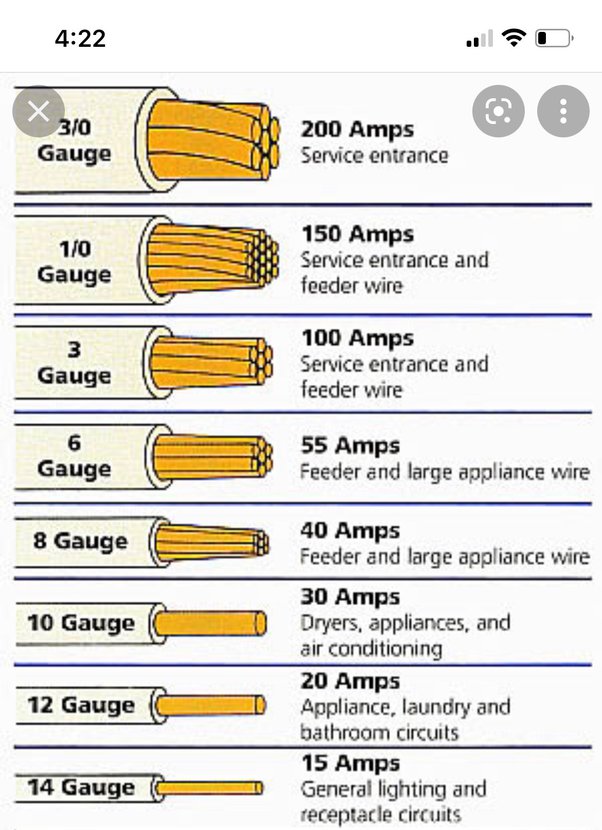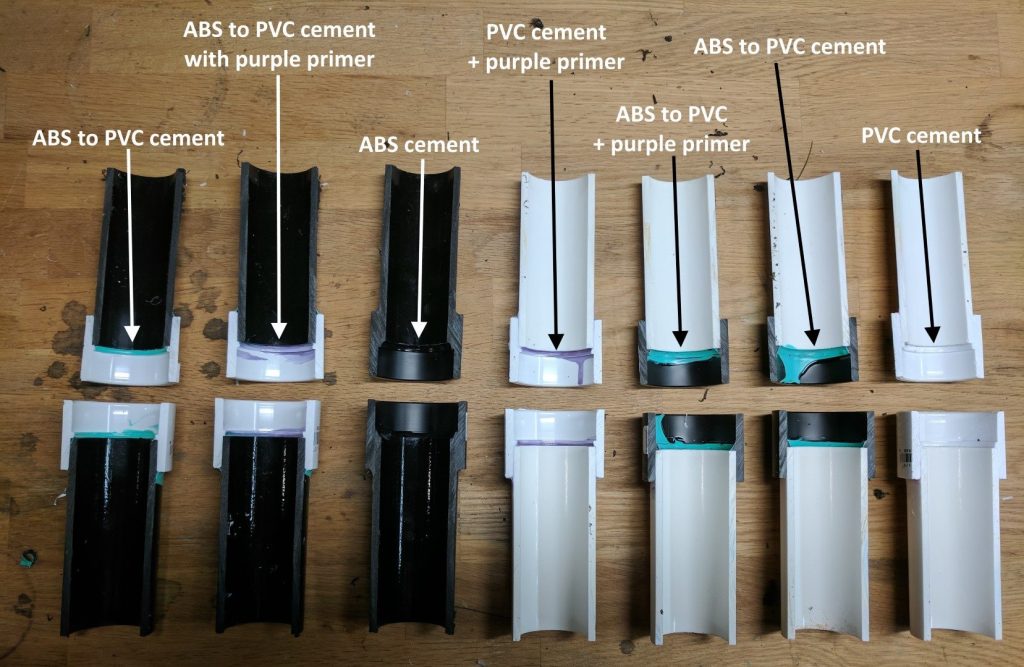Disclosure: This post contains affiliate links and I will be compensated if you make a purchase after clicking through my links. Learn More
To repair damaged plastic pipe threads, clean the threads and apply a plastic-compatible thread sealant. Use a thread repair kit if necessary.
Plastic pipes are common in plumbing due to their durability and affordability. However, damaged threads can lead to leaks and inefficiency. Repairing these threads on time is crucial to maintain the integrity of your plumbing system. Clean the threads thoroughly to ensure the sealant adheres properly.
Opt for a plastic-compatible thread sealant to prevent further damage. In cases of severe damage, a thread repair kit can restore the threads effectively. Proper maintenance and timely repairs can extend the lifespan of your plastic pipes and ensure a leak-free plumbing system. Regular inspections can help identify issues early, saving you time and money.

Introduction To Plastic Pipe Thread Repair
Plastic pipe threads can get damaged over time. Fixing them is crucial for maintaining a leak-free plumbing system. This guide will help you understand why threads get damaged and the importance of timely repairs.
Why Threads Get Damaged
Plastic pipe threads can get damaged due to several reasons:
- Wear and Tear: Frequent use can wear out threads.
- Overtightening: Applying too much force can strip threads.
- Improper Tools: Using wrong tools can cause damage.
- Exposure to Chemicals: Harsh chemicals can weaken threads.
Importance Of Timely Repairs
Timely repairs are essential for several reasons:
- Prevent Leaks: Damaged threads can cause leaks, leading to water waste.
- Ensure Safety: Leaks can lead to slippery floors and accidents.
- Avoid Costly Repairs: Small issues can become big problems if ignored.
- Maintain Water Pressure: Damaged threads can affect water flow and pressure.
Identifying The Damage
Identifying the damage to plastic pipe threads is crucial. Before fixing, you need to know the problem. This step ensures you use the right repair method. You’ll learn about different types of thread damage and how to assess the severity.
Types Of Thread Damage
Plastic pipe threads can suffer from various types of damage. Here are some common ones:
- Cross-threading: Threads are misaligned during connection.
- Stripping: Threads wear out and lose their grip.
- Cracking: Threads have visible cracks or splits.
- Flattening: Threads become flattened and lose their shape.
Assessing The Severity
Assessing the severity of the damage is the next step. Here’s how you can do it:
- Visual Inspection: Check for visible cracks, splits, or flattening.
- Thread Fit: Try fitting a matching connector. Does it screw in easily?
- Leak Test: After fitting, check for leaks when water flows.
Use a table to summarize the information:
| Type of Damage | Signs | Severity |
|---|---|---|
| Cross-threading | Misaligned threads | Low to Moderate |
| Stripping | Worn-out threads | Moderate to High |
| Cracking | Visible cracks | High |
| Flattening | Flattened threads | Moderate to High |
Knowing the type and severity of damage helps you choose the right repair method. Accurate identification ensures effective and long-lasting repairs.
Tools And Materials Needed
Repairing damaged plastic pipe threads requires the right tools and materials. Ensure you have everything ready before starting. Here’s what you’ll need:
Essential Repair Tools
Having the right tools is crucial. Here’s a list of essential tools:
- Pipe Wrench: For gripping and turning the pipe.
- Thread File: To clean and restore damaged threads.
- Pipe Cutter: For cutting the damaged section.
- Adjustable Wrench: Useful for various sizes of pipes.
- PTFE Tape: Ensures a tight seal on the threads.
Selecting The Right Materials
Choosing the correct materials is just as important. Here’s what you’ll need:
| Material | Purpose |
|---|---|
| Replacement Pipe | To replace the damaged section. |
| Pipe Sealant | To ensure a leak-proof connection. |
| Plastic Adhesive | For bonding plastic parts. |
| Thread Sealant | To seal the threads effectively. |
Ensure you have these tools and materials before you start your repair. Proper preparation makes the job easier and ensures success.
Preparation Steps
Repairing damaged plastic pipe threads requires careful preparation. Proper preparation ensures a successful repair and prevents further damage. Follow these steps to get the job done right.
Cleaning The Damaged Area
First, clean the damaged area thoroughly. Use a soft brush to remove debris. Dirt and grime can interfere with the repair. Rinse the pipe with water to remove any remaining particles. Make sure the area is completely dry before moving on. Use a cloth to wipe down the pipe. This ensures a clean surface for the repair.
Securing The Work Environment
Next, secure the work environment. Ensure you have enough light to see clearly. Good lighting helps you spot any issues. Lay down a protective sheet to catch any debris. This keeps your workspace clean and organized. Wear safety gloves to protect your hands. Safety goggles are also important to shield your eyes. Make sure all your tools are within reach. This saves time and avoids frustration.
| Tool | Purpose |
|---|---|
| Soft Brush | Remove debris |
| Cloth | Dry the pipe |
| Protective Sheet | Catch debris |
| Safety Gloves | Protect hands |
| Safety Goggles | Shield eyes |
Following these steps ensures a smooth and effective repair process. Proper preparation is key to fixing damaged plastic pipe threads.
Method 1: Teflon Tape Fix
Repairing damaged plastic pipe threads can seem daunting. But using Teflon tape is a simple and effective method. This method involves wrapping Teflon tape around the threads to create a tight seal.
Applying Teflon Tape Correctly
To apply Teflon tape correctly, follow these steps:
- Ensure the pipe threads are clean and dry.
- Start wrapping the Teflon tape at the end of the threads.
- Wrap the tape clockwise around the threads. This prevents it from unraveling.
- Overlap the tape by about 50% on each pass.
- Apply 3-4 layers of tape for a secure seal.
- Press the tape into the threads with your fingers.
Make sure the tape is smooth and tight. This ensures a proper seal.
When To Use This Method
Use the Teflon tape fix in the following situations:
- Minor damage: Small cracks or worn-out threads.
- Temporary repair: A quick fix until you can replace the pipe.
- Low-pressure systems: Suitable for systems with low water pressure.
- Non-critical applications: Use where perfect sealing is not crucial.
This method is easy and cost-effective. It extends the life of your plastic pipes.
Method 2: Epoxy Resin Application
Repairing damaged plastic pipe threads can be a daunting task. One effective method is using epoxy resin. Epoxy resin is a strong adhesive that bonds well with plastic. This method ensures a durable and lasting fix.
Preparing The Epoxy Resin
Before you start, gather all the necessary materials. You’ll need:
- Epoxy resin kit
- Sandpaper
- Clean cloth
- Mixing stick
- Protective gloves
First, clean the damaged threads thoroughly. Use a clean cloth to remove any dirt or debris. This step ensures the epoxy bonds well.
Next, sand the damaged area lightly with sandpaper. This creates a rough surface for better adhesion. Wipe away the sanding dust with the cloth.
Now, wear your protective gloves. Mix the epoxy resin according to the kit instructions. Use the mixing stick provided in the kit. Stir until the mixture is uniform in color.
Application Process
Apply the mixed epoxy resin to the damaged threads. Use the mixing stick for precise application. Make sure the resin covers the entire damaged area.
Let the epoxy resin set for the recommended time. This usually takes about 24 hours. Ensure the pipe remains undisturbed during this period.
After the resin has cured, inspect the repair. The threads should look smooth and uniform. If needed, you can lightly sand the area for a perfect finish.
Your plastic pipe is now ready for use again. This method provides a strong and durable repair.
Method 3: Thread Sealant Usage
Repairing damaged plastic pipe threads can be tricky. One effective method is using thread sealant. This method creates a tight seal, preventing leaks and further damage. Below are detailed steps for using thread sealant effectively.
Choosing The Right Sealant
Choosing the right sealant is crucial for a secure repair. Various options are available, but not all are suitable for plastic pipes. Always opt for a sealant labeled for plastic. This ensures compatibility and long-lasting results.
| Type of Sealant | Best Use |
|---|---|
| PTFE Tape | General plumbing, compatible with plastic |
| Liquid Pipe Sealant | Strong adhesion, good for high-pressure systems |
| Silicone-based Sealant | Flexible, ideal for joints with slight movement |
Step-by-step Application
Follow these steps to apply thread sealant:
- Clean the threads: Use a brush to remove debris.
- Apply the sealant: Wrap PTFE tape around the threads or apply liquid sealant evenly.
- Thread the pipe: Carefully screw the pipes together, ensuring a tight fit.
- Check for leaks: Turn on the water and inspect for any leaks.
Applying thread sealant correctly can save you from future headaches. Ensure you follow these steps carefully for a successful repair.
Method 4: Thread Insert Replacement
Repairing damaged plastic pipe threads can be challenging. Sometimes, the best solution is to use a thread insert. This method involves placing a new thread insert into the damaged area. The insert provides a fresh, strong thread for the pipe connection.
When To Consider This Option
Consider thread insert replacement if the plastic threads are badly damaged. This method works well for threads that are stripped or worn out. It is also ideal for pipes under high pressure. Using an insert can prevent leaks and ensure a secure connection.
Installation Guide
Follow these steps to install a thread insert:
- Gather Tools: You will need a drill, tap, and thread insert kit.
- Clean the Area: Ensure the damaged threads are free of debris.
- Drill the Hole: Use a drill to enlarge the damaged thread area. Follow the insert kit instructions for the correct hole size.
- Tap the Hole: Use the tap tool to create new threads inside the drilled hole.
- Insert the Thread: Place the thread insert into the newly tapped hole. Ensure it is secure and fits well.
- Test the Connection: Attach the pipe connection to the new thread insert. Check for any leaks or issues.
Here is a summary table of tools and steps:
| Tools Needed | Steps |
|---|---|
| Drill | 1. Gather Tools |
| Tap | 2. Clean the Area |
| Thread Insert Kit | 3. Drill the Hole |
| 4. Tap the Hole | |
| 5. Insert the Thread | |
| 6. Test the Connection |
Using a thread insert can save time and prevent future damage. It provides a reliable and long-lasting solution for damaged plastic pipe threads.
Final Touches And Testing
Once you have repaired the damaged plastic pipe threads, the next step is crucial. The final touches and testing ensure that your repair holds up under pressure. This process guarantees a leak-free and secure connection.
Ensuring A Tight Seal
After threading the pipe, apply pipe thread sealant or PTFE tape. This helps to secure the joint and prevent leaks. Wrap the PTFE tape around the threads in a clockwise direction. Ensure you cover the threads completely but not too thickly.
Check that the connection is tight. Use a wrench to tighten the pipe. Do not overtighten as this could damage the threads. A snug fit is sufficient for a good seal.
Pressure Testing The Repair
Pressure testing is essential to confirm the repair’s success. Follow these steps to perform a proper pressure test:
- Close all water outlets connected to the pipe.
- Slowly open the water supply valve.
- Observe the pipe for any signs of leaks.
- Use a pressure gauge to monitor the pressure levels.
If there are no leaks and the pressure is stable, the repair is successful. If you notice any leaks, turn off the water supply immediately. Recheck the sealant or tape application and retighten the connection if needed.
These final touches ensure your plastic pipe repair is both effective and long-lasting.
Preventive Measures And Maintenance Tips
Plastic pipe threads can get damaged easily. But, taking preventive measures helps. Regular maintenance also keeps the threads in good shape. Here are some tips to prevent damage and maintain your plastic pipe threads.
Avoiding Future Damage
- Use Thread Seal Tape: Always use thread seal tape when connecting pipes. This reduces friction and wear.
- Avoid Over-tightening: Over-tightening can crack the threads. Tighten just enough to secure the connection.
- Choose the Right Tools: Use tools that fit the pipe size. Wrong tools can damage the threads.
- Keep Threads Clean: Dirt and debris can damage threads. Clean the threads before connecting pipes.
Routine Check-up Suggestions
Regular check-ups can identify issues early. Follow these tips for routine maintenance:
- Inspect for Cracks: Check the threads for cracks. Replace any damaged parts immediately.
- Check for Leaks: Look for leaks around the threads. Leaks may indicate damaged threads.
- Lubricate Threads: Use a suitable lubricant on the threads. This reduces wear and tear.
- Test Connections: Regularly test pipe connections. Ensure they are secure and leak-free.
These tips help maintain your plastic pipe threads. Taking preventive measures avoids future damage. Regular check-ups ensure longevity.
Frequently Asked Questions
How Do You Seal Damaged Pipe Threads?
To seal damaged pipe threads, clean the threads thoroughly. Apply pipe thread sealant or Teflon tape evenly. Tighten the pipe securely. Check for leaks and reapply if necessary. Ensure a snug fit to prevent future leaks.
How To Fix A Plastic Screw Thread?
Apply a plastic thread repair kit. Clean the damaged area. Apply adhesive. Insert the new thread insert. Let it cure.
How To Fix A Leaking Threaded Pvc Joint Without Cutting?
Apply Teflon tape or pipe thread sealant to the threads. Tighten the joint carefully. Check for leaks.
How To Fix Plastic Crossthreads?
To fix plastic crossthreads, use a thread repair kit. Clean the damaged area first. Apply the repair compound, then re-thread carefully. Let it cure fully before use.
Final Words
Repairing damaged plastic pipe threads is simple with the right tools and techniques. Follow the steps for a lasting fix. Regular maintenance can prevent future issues. With these tips, you can save time and money on plumbing repairs. Keep your pipes in top shape for smooth water flow.


